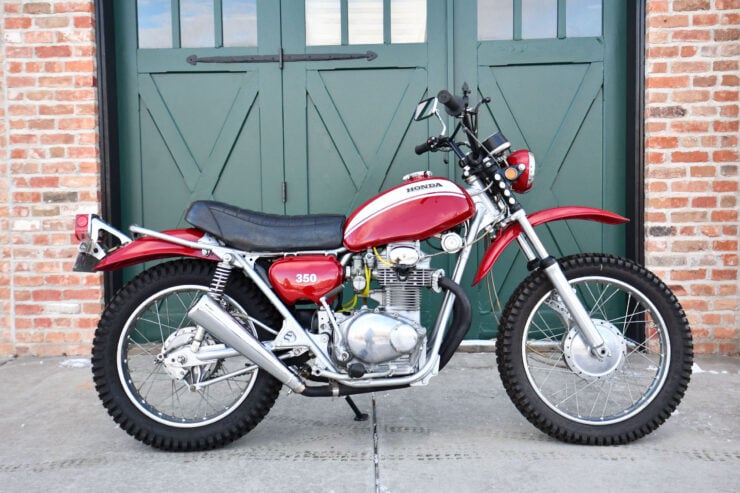Month: March 2022
And the War goes on…..

The Bureau of Alcohol, Tobacco, Firearms and Explosives, or BATFE or just ATF, just issued an “open letter” (.pdf) notifying Federal Firearms Licensees stating that their offices have concluded that some forced-reset triggers, or FRTs, are machineguns.
However, the ATF office did not indicate which triggers qualify as machine guns, just that some do. And while the letter is meant for FFLs, it may affect owners of FRTs as well.
Here is the letter:
“The Bureau of Alcohol, Tobacco, Firearms and Explosives (ATF) recently examined devices commonly known as ‘forced reset triggers’ (FRTs) and has determined that some of them are ‘firearms’ and ‘machineguns’ as defined in the National Firearms Act (NFA) and ‘machineguns’ as defined in the Gun Control Act (GCA).
“These particular FRTs are being marketed as replacement triggers for AR-type firearms. Unlike traditional triggers and binary triggers (sometimes referred to generally as ‘FRTs’) the subject FRTs do not require shooters to pull and then subsequently release the trigger to fire a second shot. Instead, these FRTs utilize the firing cycle to eliminate the need for the shooter to release the trigger before a second shot is fired. By contrast, some after-market triggers have similar components but also incorporate a disconnector or similar feature to ensure that the trigger must be released before a second shot may be fired and may not be machineguns.
“Both the NFA and GCA regulate machineguns. “Machinegun” is defined under 26 U.S.C.”
“§ 5845(b) and 18 U.S.C. § 921(a)(23) as — Any weapon which shoots, is designed to shoot, or can be readily restored to shoot, automatically more than one shot, without manual reloading, by a single function of the trigger. The term shall also include the frame or receiver of any such weapon, any part designed and intended solely and exclusively, or combination of parts designed and intended, for use in converting a weapon into a machinegun, and any combination of parts from which a machinegun can be assembled if such parts are in the possession or under the control of a person.
“ATF’s examination found that some FRT devices allow a firearm to automatically expel more than one shot with a single, continuous pull of the trigger. For this reason, ATF has concluded that FRTs that function in this way are a combination of parts designed and intended for use in converting a weapon into a machinegun, and hence, ATF has classified these devices as a “machinegun” as defined by the NFA and GCA.
“Accordingly, ATF’s position is that any FRT that allows a firearm to automatically expel more than one shot with a single, continuous pull of the trigger is a ‘machinegun’ and is accordingly subject to the GCA prohibitions regarding the possession, transfer, and transport of machineguns under 18 U.S.C. §§ 922(o) and 922(a)(4). They are also subject to registration, transfer, taxation and possession restrictions under the NFA. See 26 U.S.C. §§ 5841, 5861; 27 CFR 479.101.
“Under 26 U.S.C. § 5871, any person who violates or fails to comply with the provisions of the NFA may be fined up to $10,000 per violation and is subject to imprisonment for a term of up to ten years. Further, pursuant to 26 U.S.C. § 5872, any machinegun possessed or transferred in violation of the NFA is subject to seizure and forfeiture. Under 18 U.S.C. § 924(a)(2), any person who violates § 922(o) may be sent to prison for up to 10 years and fined up to $250,000 per person or $500,000 per organization.
“Based on ATF’s determination that the FRTs that function as described above are “machineguns” under the NFA and GCA, ATF intends to take appropriate remedial action with respect to sellers and possessors of these devices. Current possessors of these devices are encouraged to contact ATF for further guidance on how they may divest possession. If you are uncertain whether the device you possess is a machinegun as defined by the GCA and NFA, please contact your local ATF Field Office. You may consult the local ATF Office’s webpage for office contact information.”

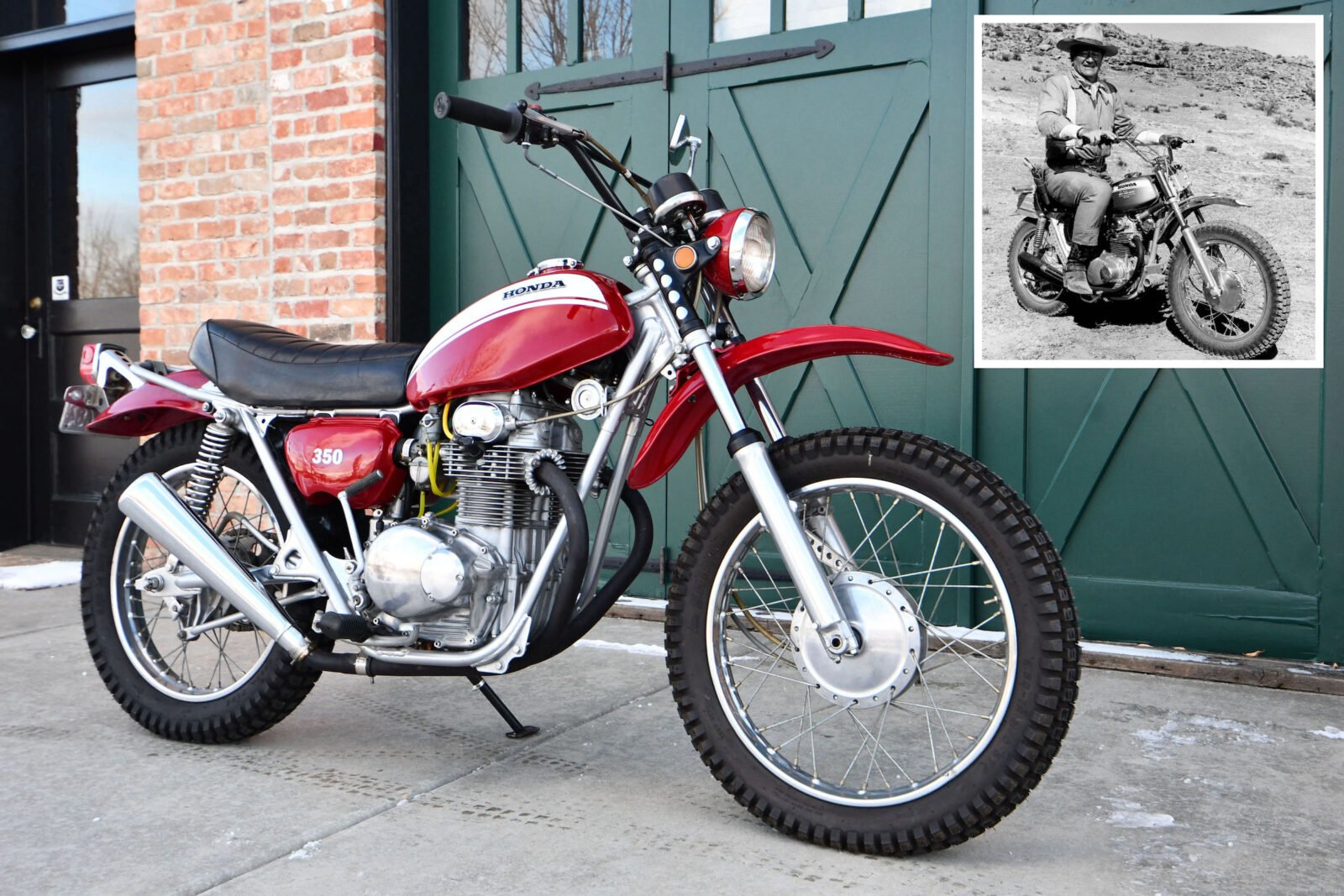
This is the Honda SL350 that John Wayne bought brand new from the American Honda Motor Co. on the 21st of December 1971. It’s believed that he came into contact with the SL350 for the first time while filming the movie Big Jake in the deserts of Mexico.
There’s a famous image of him astride the Honda (image inset above), wearing full cowboy regalia naturally, and it seems that he enjoyed riding it so much he went and bought his own after filming wrapped.
Fast Facts – The Honda SL350
- The Honda SL350 was released in 1969, it’s largely the same bike as the road-going Honda CB350 with some modifications for off-road use.
- While it would never be a proper enduro bike it was a halfway decent scrambler, and the incredible reliability of its parallel twin engine made it popular with those riding in remote regions.
- It’s thought that John Wayne first encountered the model while filming “Big Jake” in late 1970. he enjoyed riding it so much he went out and got his own.
- The Honda SL350 was released in 1969 and sold until 1974, its affordability combined with its rugged reliability made it a favorite with many Americans.
John Wayne’s Honda SL350
The Honda SL350 isn’t a motorcycle that any would associate with John Wayne. He’s more closely associated with riding horses, and if he was going to ride a motorcycle you’d expect it to be something large, chromed, and probably American.
The film Big Jake was shot in late 1970, it stars John Wayne of course, along with his sons Patrick Wayne and Ethan Wayne, with Richard Boone and Maureen O’Hara. The script was originally titled The Million Dollar Kidnapping, which is an objectively better name, and it centers around The Fain Gang kidnapping “Little Jake” and taking him across the border into Mexico.
A one million dollar ransom was demanded, and the film unfolds from there. I won’t go into too much detail here as I don’t want to ruin the film for you if you haven’t seen it.
For whatever reason there was at least one Honda SL350 on set which John Wayne commandeered. Due to its relatively low weight and ease of use it was an ideal motorcycle for use in the Mexican desert, Wayne seems to have been so impressed with it he bought his own a few months later and kept it at his home in Newport Beach, California.
In the years since the bike left John Wayne’s ownership it has been through a thorough restoration back to the original condition that it would have been in when he first took ownership of it all those years ago.
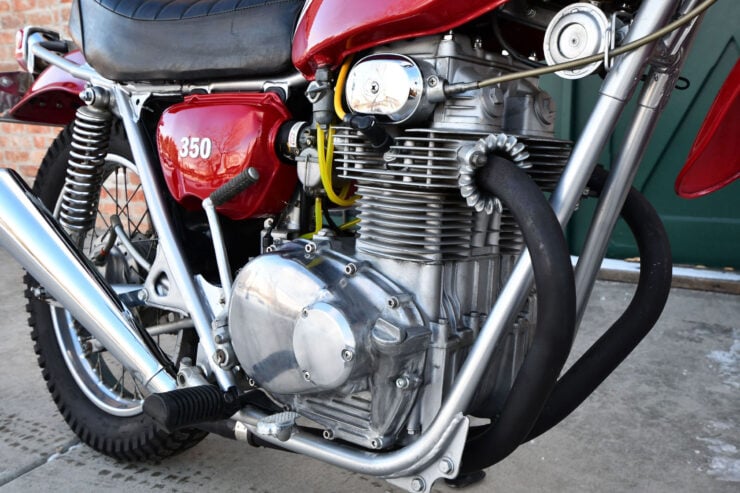

The bike is accompanied by the original California ownership transfer document as proof of John Wayne’s ownership history, and it’s being offered without reserve by RM Sotheby’s on the 27th of January in Phoenix, Arizona.
If you’d like to read more about this SL350 or register to bid you can click here to visit the listing. It’s due to roll across the auction block next month in Arizona with RM Sotheby’s.
Honda SL350 Specifications
- The SL350 is powered by the same engine as the CB350, an air-cooled parallel with with a single overhead cam, two-valves per cylinder, and a swept capacity of 325cc.
- This engine produces 33 bhp at 9,500 rpm, and the motorcycle has a top speed of 86 mph and a 0 to 60 mph time of 8.6 seconds.
- A number of different frame, suspension, and wheel options were offered over the production run of the SL350. The most important of which is probably the switch to a stronger double down tube frame from 1970 onwards.
- The dry weight of the SL350 is listed as 145 kilograms or 320 lbs, however the wet weight was a considerably more hefty 167 kilograms or 368 lbs.
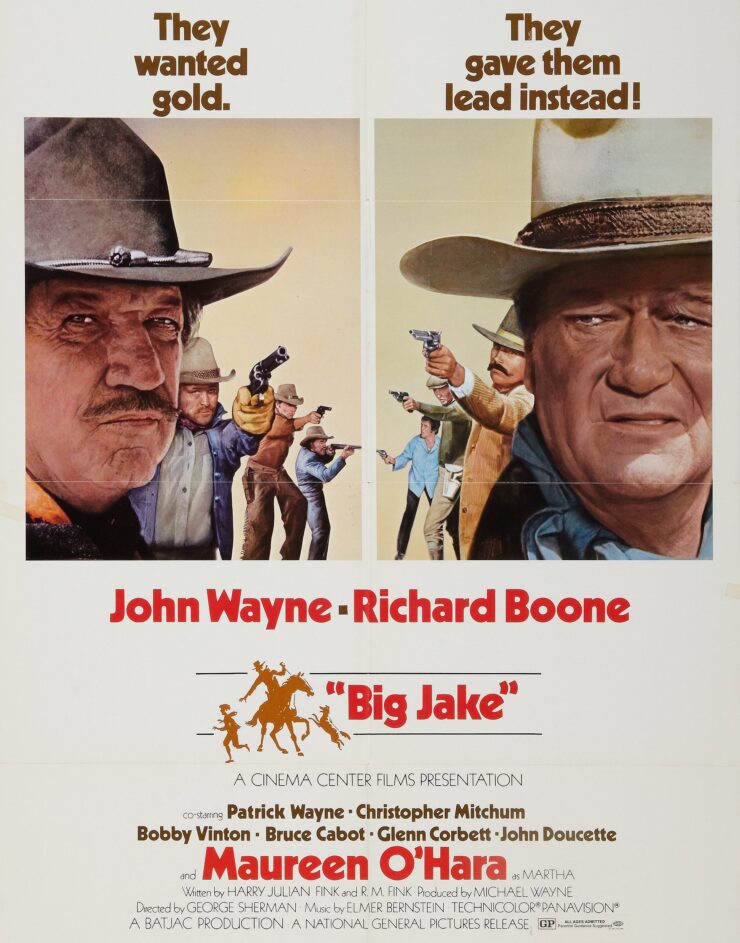
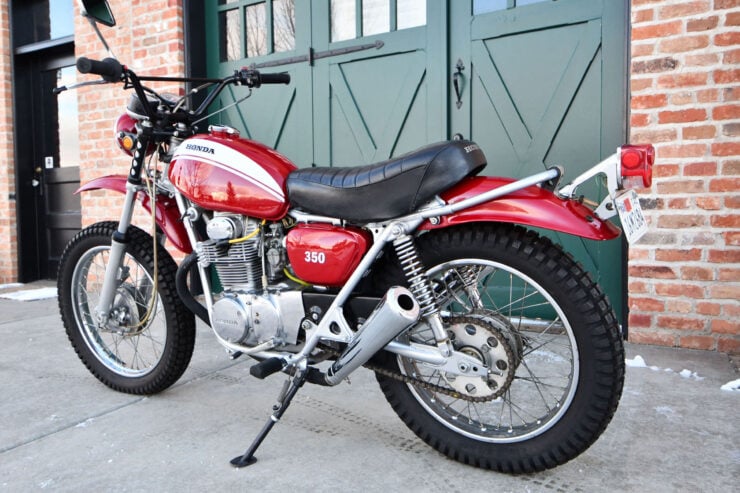
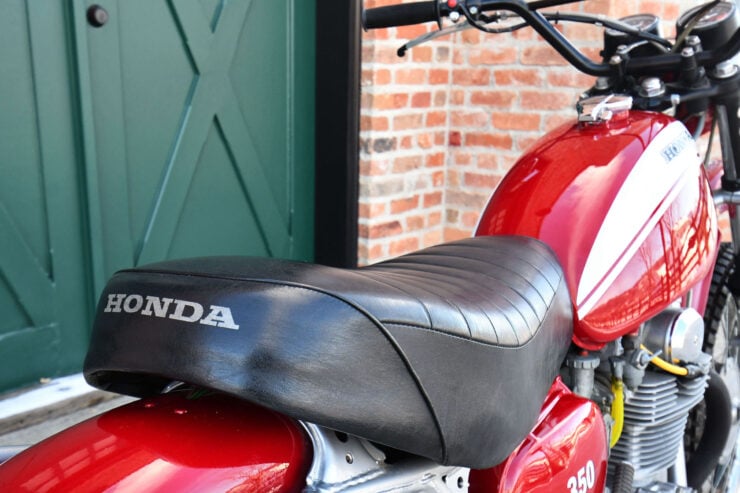
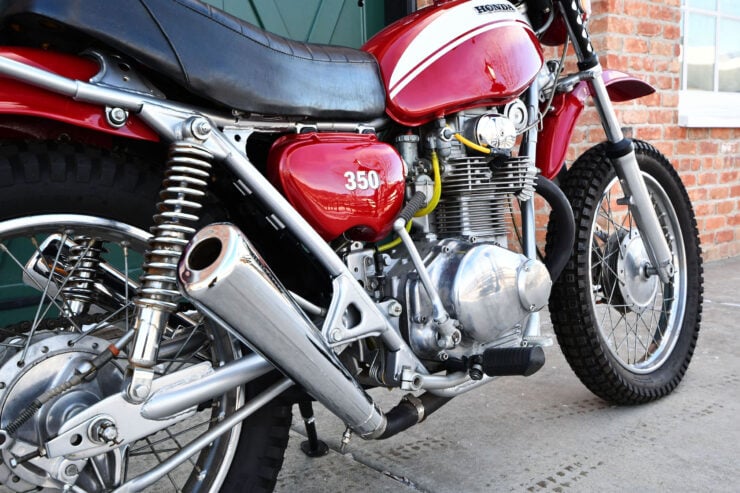
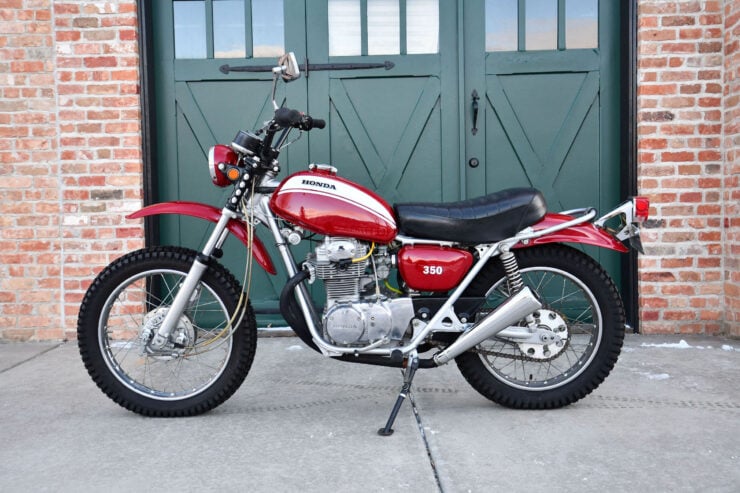
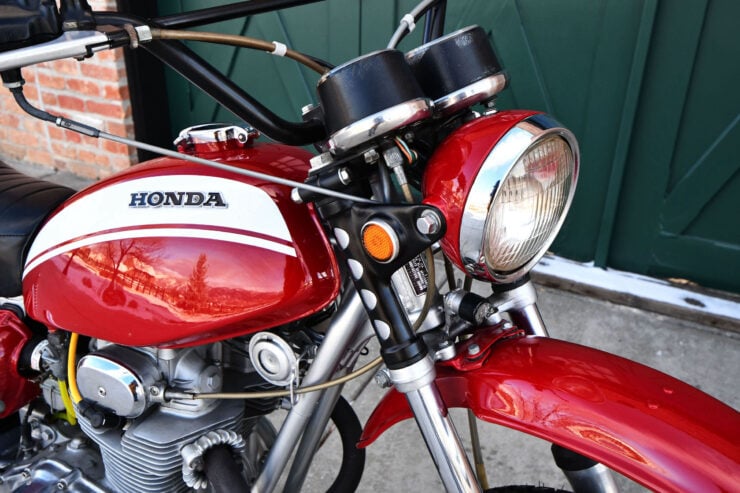
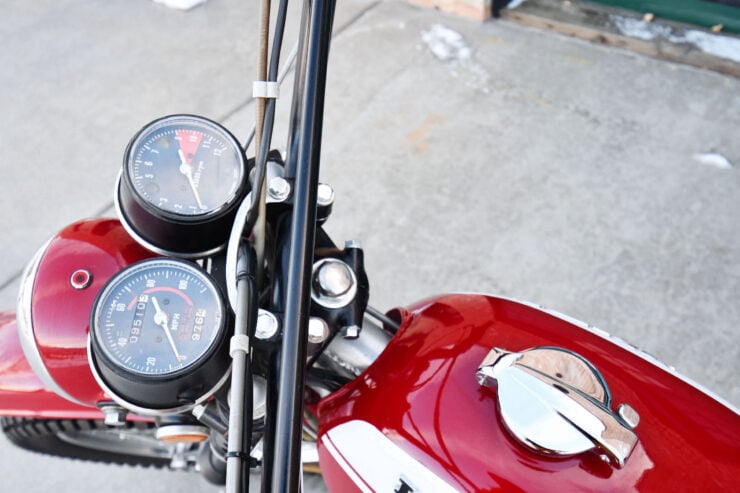
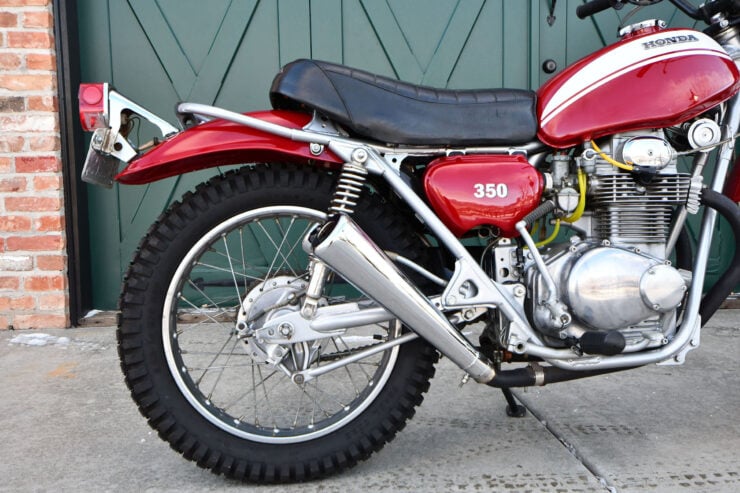
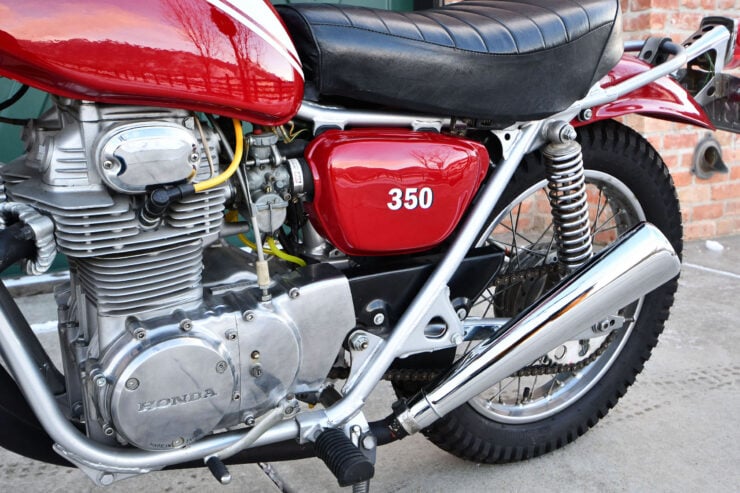
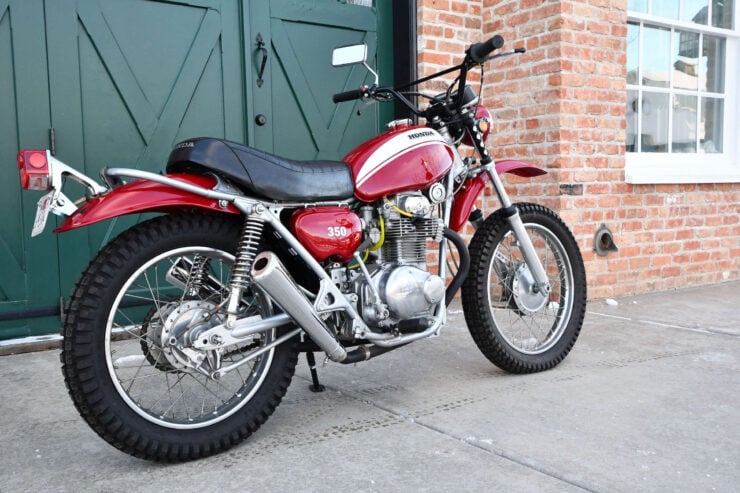
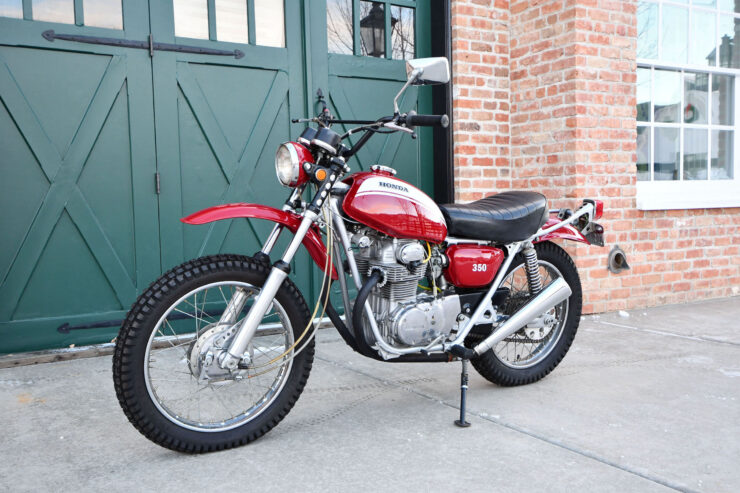
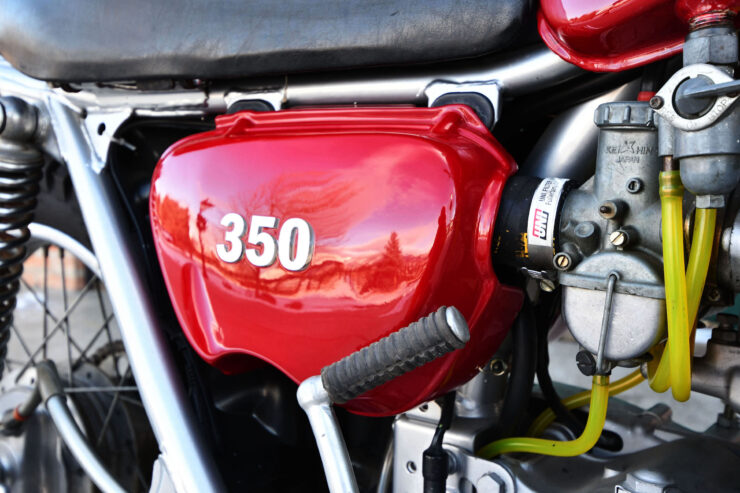
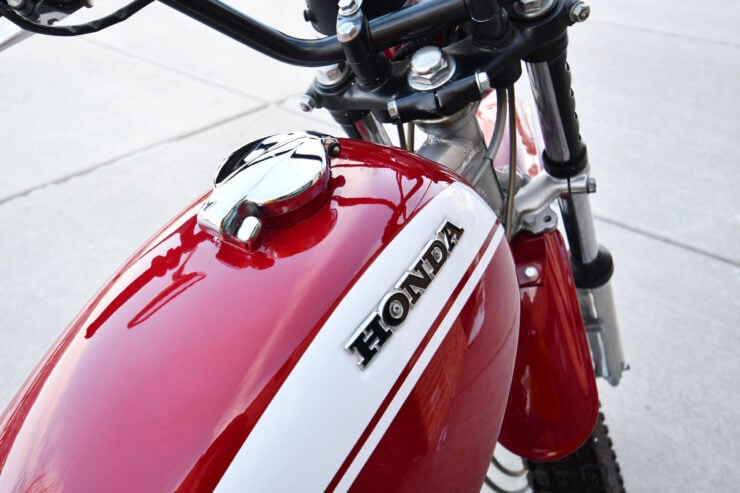
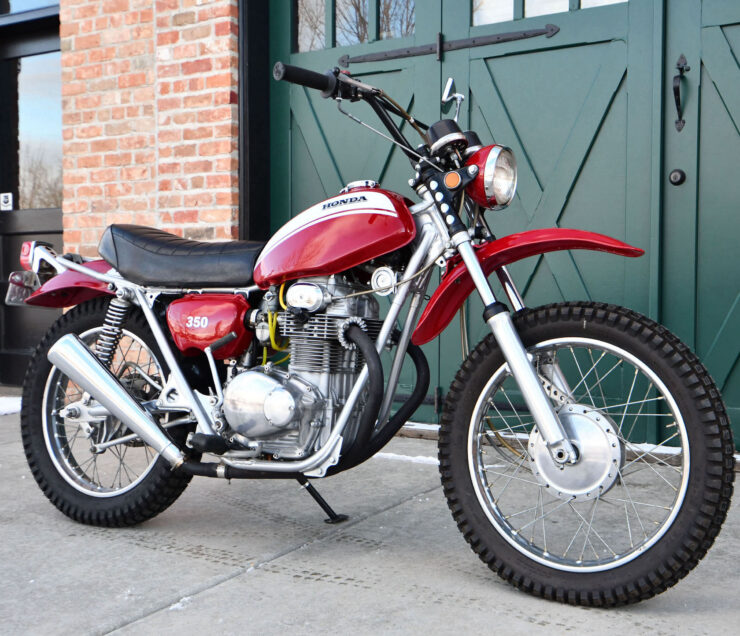 Images: ©2021 Courtesy of RM Sotheby’s
Images: ©2021 Courtesy of RM Sotheby’s
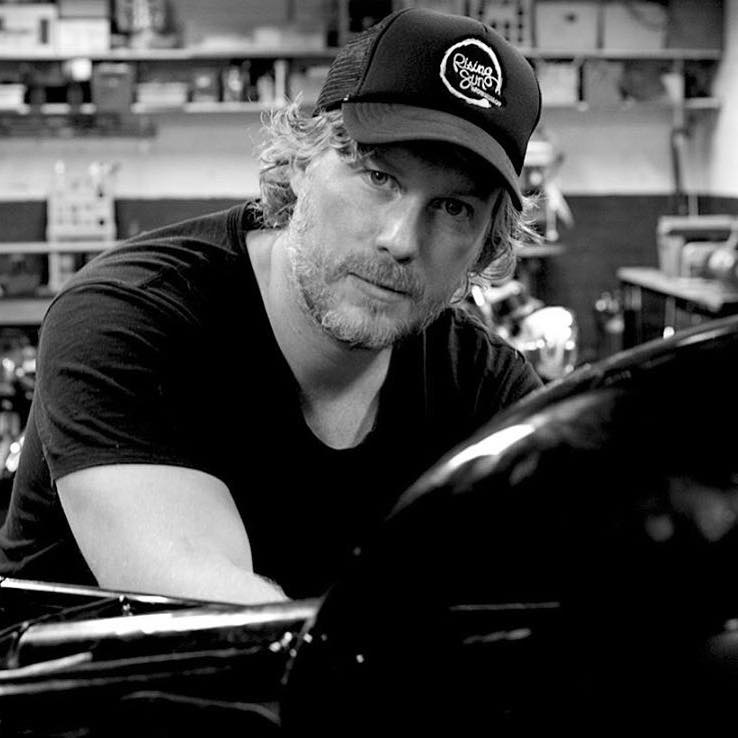
Ben has had his work featured on CNN, Popular Mechanics, Smithsonian Magazine, Road & Track Magazine, the official Pinterest blog, the official eBay Motors blog, BuzzFeed, and many more.
Silodrome was founded by Ben back in 2010, in the years since the site has grown to become a world leader in the alternative and vintage motoring sector, with millions of readers around the world and many hundreds of thousands of followers on social media.
What a Stud!

